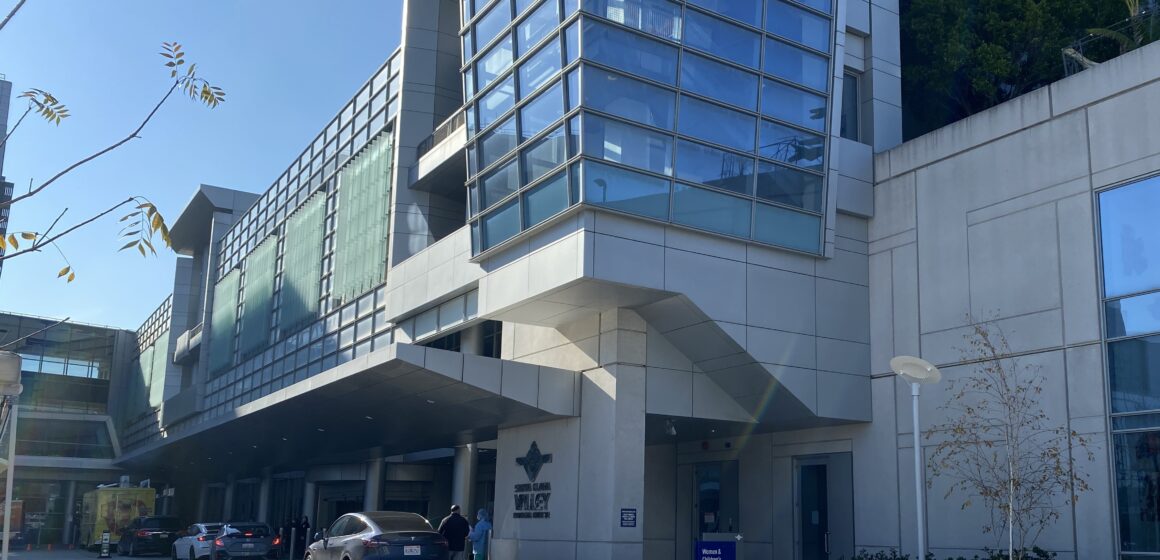Sweeping federal spending cuts to Northern California’s largest public hospital system could ripple far beyond Silicon Valley — threatening communities statewide that rely on doctors trained in Santa Clara County.
Public hospitals train 50% of new doctors across California, despite comprising only 6% of the state’s total hospitals, according to statewide data. Santa Clara County’s hospital system, the second largest in the state, accounts for a bulk of that new workforce and trains about 110 doctors a year, according to county leaders.
But that might change in coming years, when President Donald Trump’s watershed budget bill takes effect and dries up a projected $1 billion in funding for county health system services. Officials have warned this kind of revenue drop off isn’t something they can budget through.
“If you impact the types of services we’re able to provide, you impact the training young physicians can receive,” County Executive James Williams told San José Spotlight.
Williams said many physicians in Northern California — both public and private practice — had a rotation or did their residency at the county’s hospitals.
“It’s where they’ve gotten their training and have seen the kind of variety of cases that you can only get exposure to at a comprehensive trauma center like Valley Medical Center’s,” he said.
The county has vastly expanded its hospital system beyond Valley Medical Center in recent years. Last year it acquired Regional Medical Center in East San Jose to prevent cuts to critical care by its previous corporate owner HCA. Prior to the Regional acquisition, it added O’Connor Hospital in San Jose, Saint Louise Regional Hospital in Gilroy and DePaul Medical Center in Morgan Hill in 2019 to its portfolio.
Valley Medical Center in San Jose provides training for doctors out of medical school through an internal medicine program, OBGYN residency program and radiology residency program. But one of the hospital’s most critical offerings is its regional burn center. The center is one of only three of its kind between Los Angeles and the Oregon border — and one of the only places to train care practitioners, according to Clifford Sheckter, director of VMC’s regional burn center and a health policy researcher at Stanford University.
“People who have commercial insurance may think these cuts won’t affect them,” Sheckter told San José Spotlight. “But for something like burns — it doesn’t matter if you’re the wealthiest tech executive in Silicon Valley or homeless on the Guadalupe River. If you’re burned, you’re going to the exact same place.”
There are private burn centers in other parts of the state. But even those practitioners are trained at public hospitals, he added.
“We provide burn training to Stanford’s plastic surgery and general surgery residency programs. We are providing burn education for future practitioners,” Sheckter said. “My job as burn director is to make sure we don’t compromise the training or quality of care given, because we’re the only burn center in the Bay Area. There is no other option.”
Stanford University also sends its family medicine residents to county-owned O’Connor Hospital. County hospitals additionally train other health care personnel, including physician assistants, nurse practitioners and patient pharmacists. Residents train in these programs for several years.
“A lot of Stanford residents come to us for training in all different specialities like anesthesiology, surgery, ophthalmology, pediatrics — you name it,” Santa Clara Valley Healthcare Chief Medical Officer Phuong Nguyen told San José Spotlight. “Most of their training programs have some form of rotation at Valley Medical Center. We train a lot of people.”
Nguyen said it remains to be seen how federal funding cuts will specifically affect doctor training. The hospital system likely won’t feel the spending bill’s impacts until 2027 — congressional lawmakers programmed most of the cuts to take effect in December 2026, after the midterm election.
“If we lose our ability to train the workforce of the future — there would be significant impacts and an increased shortage of providers in the future,” Nguyen said.
 Williams said a steep physician shortage has fueled even steeper competition to attract health care workers to different communities across the U.S. Intensifying this problem is a looming older adult population boom by the mid-century, which could spell a scarcity of young health care workers to tend to the aging population.
Williams said a steep physician shortage has fueled even steeper competition to attract health care workers to different communities across the U.S. Intensifying this problem is a looming older adult population boom by the mid-century, which could spell a scarcity of young health care workers to tend to the aging population.
“It’s often the case that physicians end up settling down in the communities where they do their residencies or fellowships and rotations,” Williams said. “Having a robust public hospital system here in the South Bay helps retain our physician workforce, especially in different specialties.”
District 5 Supervisor Margaret Abe-Koga warned the cuts will also dismantle the Public Service Loan Forgiveness Program.
“A highly popular program that helps the next generation of doctors afford the significant financial burden of attending medical school,” she told San José Spotlight. “This is America hobbling its future, hurting the most vulnerable and stunting the next generation. What the benefit to the common good is eludes me.”
Contact Brandon Pho at [email protected] or @brandonphooo on X.



Leave a Reply
You must be logged in to post a comment.